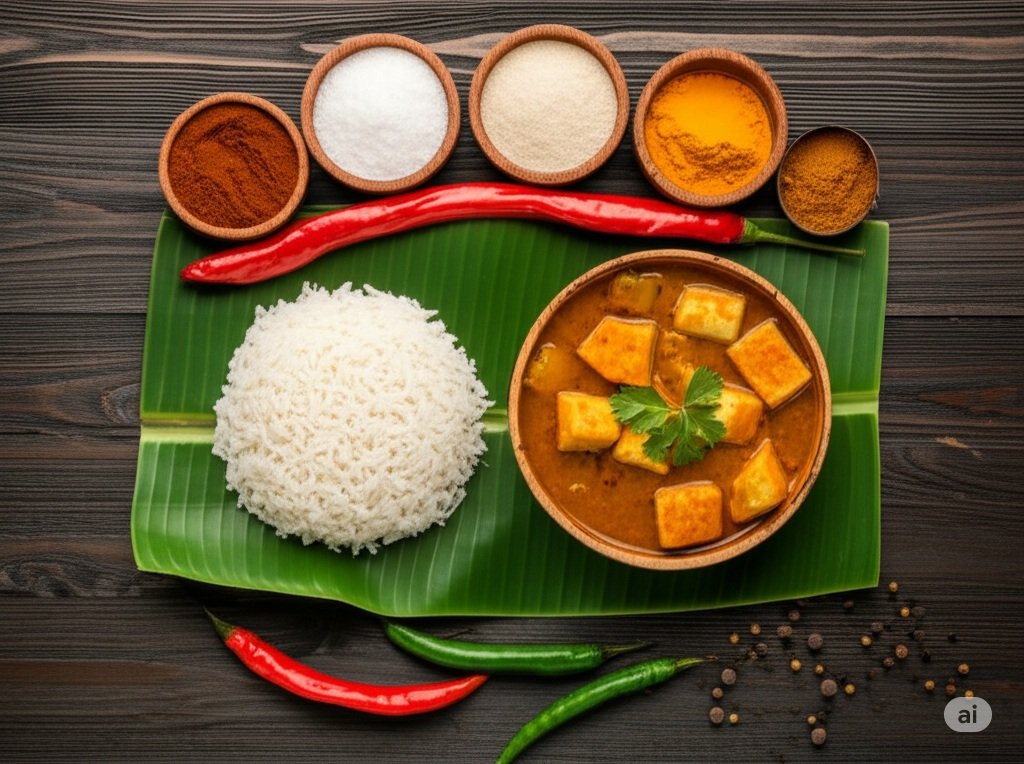South Indian Diet vs North Indian Diet: Unpacking the Healthiest Choice


Explore the nutritional differences between South and North Indian cuisines. Discover which dietary patterns offer superior health benefits.
India, a land of vibrant cultures, boasts diverse culinary traditions. Among these, South Indian and North Indian diets stand out with their distinct flavors and ingredients. Many often wonder which of these regional cuisines is healthier. Let’s delve into a detailed comparison to uncover the nutritional aspects of each.
A Tale of Two Regions: Staple Foods
The foundation of both diets lies in carbohydrates. However, the primary sources differ significantly. South Indian cuisine predominantly features rice, often in the form of idlis, dosas, and rice meals. Furthermore, lentils and legumes are also integral, contributing protein and fiber. Conversely, North Indian diets rely heavily on wheat, typically consumed as roti, naan, and paratha. Rice is also a part of the North Indian diet, but it generally takes a secondary role. Additionally, vegetables play a crucial role in both culinary styles, though the types and preparations may vary.
Cooking Oils and Fat Content
Cooking methods and the types of fats used also contribute to the overall health profile. South Indian cooking traditionally incorporates coconut oil and vegetable oils like sesame or groundnut oil. While coconut oil has been a subject of debate regarding its saturated fat content, its medium-chain triglycerides (MCTs) are believed to have some health benefits. On the other hand, North Indian cuisine often uses ghee (clarified butter) and vegetable oils. Furthermore, richer dishes with higher cream and butter content are also more common in North Indian cuisine, potentially increasing the overall fat intake.
Spice It Up: Flavor and Health
Spices are the heart and soul of Indian cooking, and both regional styles utilize a wide array. However, the specific spices and their proportions can vary. South Indian dishes often feature curry leaves, mustard seeds, and a generous use of chili peppers. These spices are known for their antioxidant and anti-inflammatory properties. Similarly, North Indian cuisine employs spices like cumin, coriander, turmeric, and garam masala, each offering unique health benefits. Therefore, both diets are rich in flavor and potentially health-promoting spices.
Dairy and Sweets: A Sweet Contrast
Dairy products are enjoyed in both regions, but their usage differs. Yogurt (dahi) and buttermilk are common accompaniments in South Indian meals, aiding digestion. In contrast, North Indian cuisine features a wider variety of dairy-based dishes, including paneer (Indian cheese), lassi (a yogurt-based drink), and richer curries made with cream. Additionally, sweets are an integral part of both cuisines. However, North Indian sweets often tend to be richer and made with higher amounts of sugar and ghee compared to some of their South Indian counterparts, which might utilize jaggery or fruits more frequently.
So, Which One is Healthier?
Determining a definitively “healthier” diet is complex, as both South and North Indian cuisines can be nutritious when prepared with a focus on balance and moderation. However, some aspects might offer slight advantages.
- South Indian cuisine’s emphasis on steamed foods like idlis and appams generally means lower oil consumption compared to some North Indian fried breads.
- The frequent use of lentils and sambar in South Indian meals contributes significantly to protein and fiber intake.
- North Indian cuisine offers a wider variety of whole wheat options, which are beneficial for sustained energy release.
- However, the richer and cream-based dishes common in North India can contribute to higher saturated fat and calorie intake if consumed frequently.
Ultimately, the healthfulness of either diet depends on individual food choices, cooking methods, and portion sizes. A balanced approach that incorporates plenty of vegetables, whole grains, lean proteins, and mindful use of fats is key to a healthy dietary pattern, regardless of the regional cuisine.
Recent Posts
A Gang’s Chilling Warning to Bollywood after the Kapil Sharma Cafe Attack
A recent incident at actor-comedian Kapil Sharma’s cafe has sent a chilling message through the… Read More
Modi and Putin’s Crucial Talk: Strengthening Ties Amid Global Tensions
Narendra Modi and Russian President Vladimir Putin recently held an important conversation, reaffirming the strong… Read More
The Bull and Bear Tussle: How Trump’s Tariffs Are Shaking Up the Indian Stock Market
Indian stock markets are on edge after new US tariffs. Will the Nifty50 and Sensex… Read More
Hope Amidst the Uttarkashi Flash Floods: Families Await News
Anxious families in Uttarkashi wait for news after flash floods. Discover the ongoing rescue efforts… Read More
India’s Unwavering Pledge: Farmers’ Interests Paramount, Says PM Modi
The nation recently witnessed a strong and clear message from Prime Minister Narendra Modi regarding… Read More
Beyond Flavor: Unveiling the Healing Powers of Indian Spices
Indian cuisine is renowned worldwide for its vibrant flavors and aromatic spices. However, these culinary… Read More